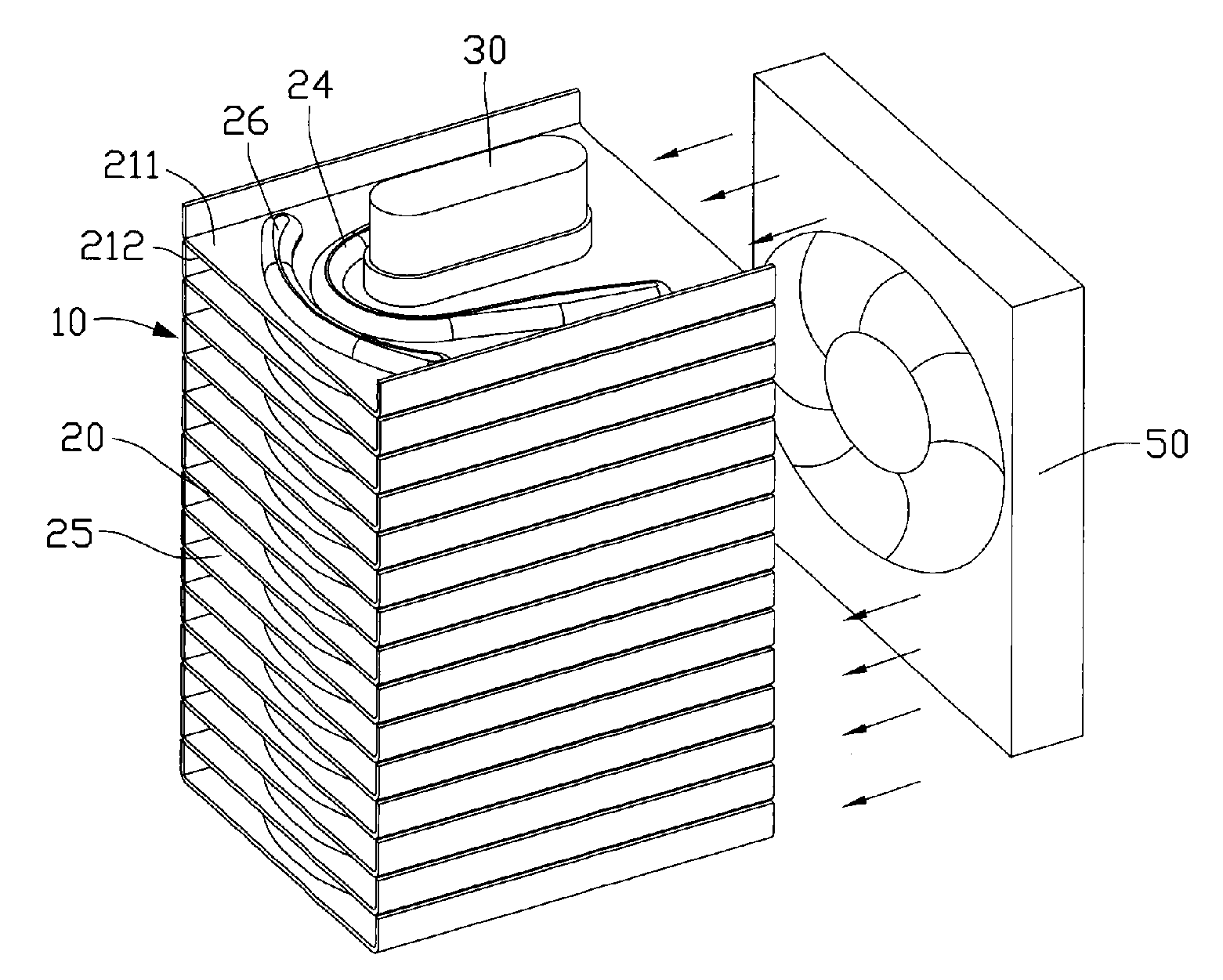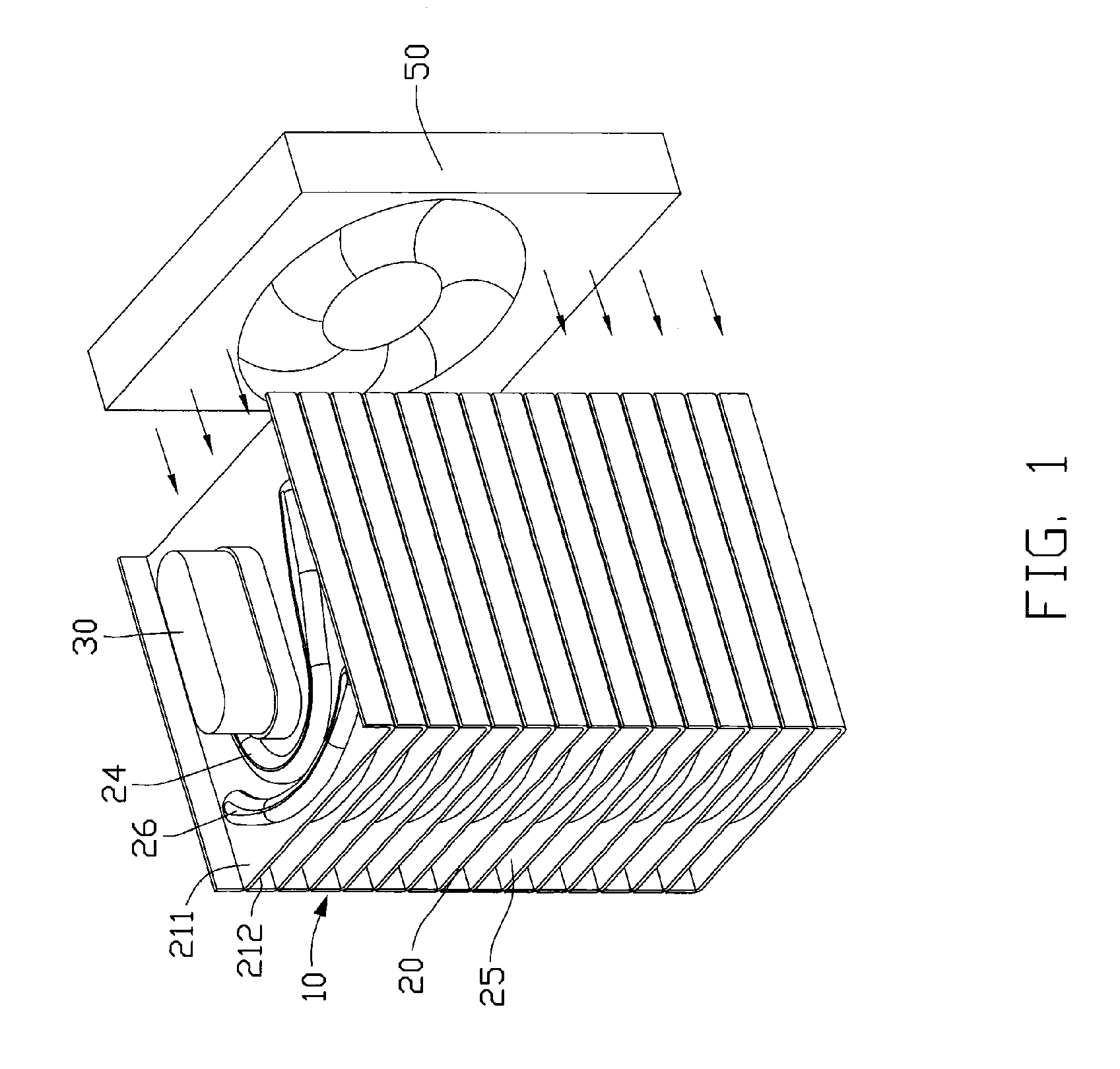Heat sink
a heat sink and heat sink technology, applied in the field of heat sinks, can solve the problems of increasing the weight of the heat sink, increasing noise, and affecting the heat dissipation effect, so as to achieve sufficient heat exchange, effectively dissipate the heat of the fin unit, and enhance the turbulence on the surface of the fin.
- Summary
- Abstract
- Description
- Claims
- Application Information
AI Technical Summary
Benefits of technology
Problems solved by technology
Method used
Image
Examples
Embodiment Construction
[0015] Referring to FIG. 1, a heat sink comprises a fin unit 10, and a heat pipe 30 extending through the fin unit 10. The heat pipe 30 has an evaporating section (not labeled) for thermally connecting with a heat source, for example, a central processing unit (CPU, not shown). A cooling fan 50 is arranged at a side of the fin unit 10 for generating an airflow towards the fin unit 10 as indicated by arrows.
[0016] Referring to FIGS. 2-4, the fin unit 10 comprises a plurality of stacked fins 20 parallel to each other. Each fin 20 has a main body 21 which has a reference surface 211 and a base surface 212, and two hems 23 bent from two opposite side edges of the main body 21. Distal edges of the hems 23 of each fin 20 contact with the base surface 212 of an adjacent fin 20, and the height of these hems 23 is thus equal to the distance between the two neighboring fins 20. A flow channel 25 is formed between each two neighboring fins 20 to channel the airflow generated by the fan 50. A ...
PUM
 Login to View More
Login to View More Abstract
Description
Claims
Application Information
 Login to View More
Login to View More - R&D
- Intellectual Property
- Life Sciences
- Materials
- Tech Scout
- Unparalleled Data Quality
- Higher Quality Content
- 60% Fewer Hallucinations
Browse by: Latest US Patents, China's latest patents, Technical Efficacy Thesaurus, Application Domain, Technology Topic, Popular Technical Reports.
© 2025 PatSnap. All rights reserved.Legal|Privacy policy|Modern Slavery Act Transparency Statement|Sitemap|About US| Contact US: help@patsnap.com



